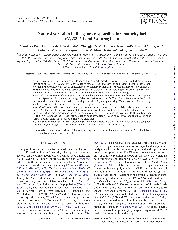摘要
The timing of flowering has a direct impact on successful seed production in plants. Flowering of soybean (Glycine max) is controlled by several E loci, and previous studies identified the genes responsible for the flowering loci E1, E2, E3 and E4. However, natural variation in these genes has not been fully elucidated. The aims of this study were the identification of new alleles, establishment of allele diagnoses, examination of allelic combinations for adaptability, and analysis of the integrated effect of these loci on flowering. The sequences of these genes and their flanking regions were determined for 39 accessions by primer walking. Systematic discrimination among alleles was performed using DNA markers. Genotypes at the E1E4 loci were determined for 63 accessions covering several ecological types using DNA markers and sequencing, and flowering times of these accessions at three sowing times were recorded. A new allele with an insertion of a long interspersed nuclear element (LINE) at the promoter of the E1 locus (e1-re) was identified. Insertion and deletion of 36 bases in the eighth intron (E2-in and E2-dl) were observed at the E2 locus. Systematic discrimination among the alleles at the E1E3 loci was achieved using PCR-based markers. Allelic combinations at the E1E4 loci were found to be associated with ecological types, and about 6266 of variation of flowering time could be attributed to these loci. The study advances understanding of the combined roles of the E1E4 loci in flowering and geographic adaptation, and suggests the existence of unidentified genes for flowering in soybean,.
- 出版日期2014-2
